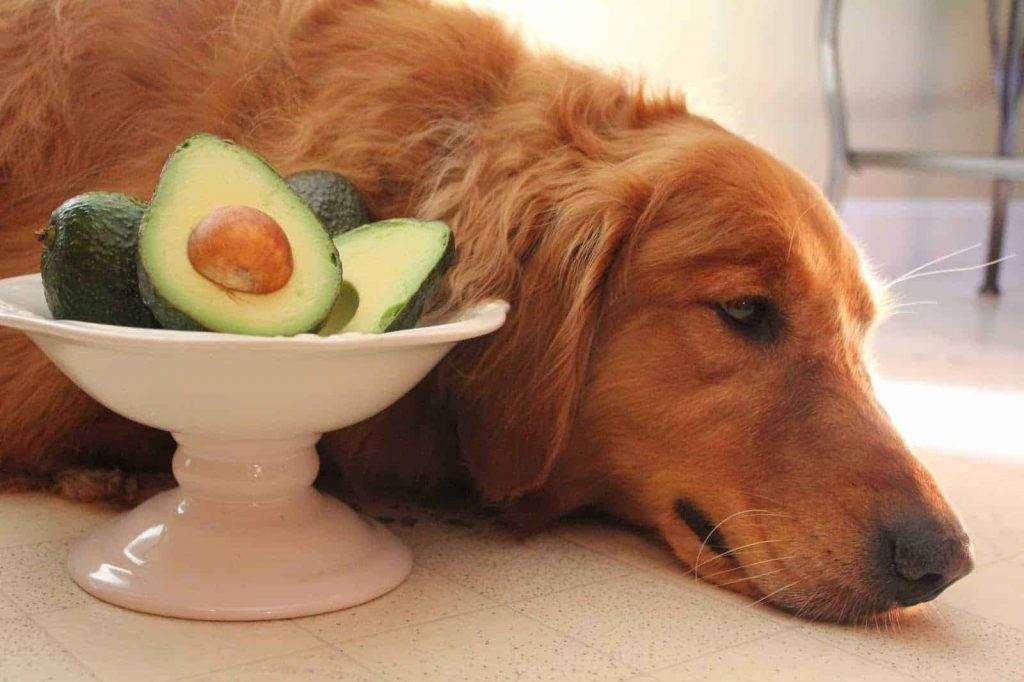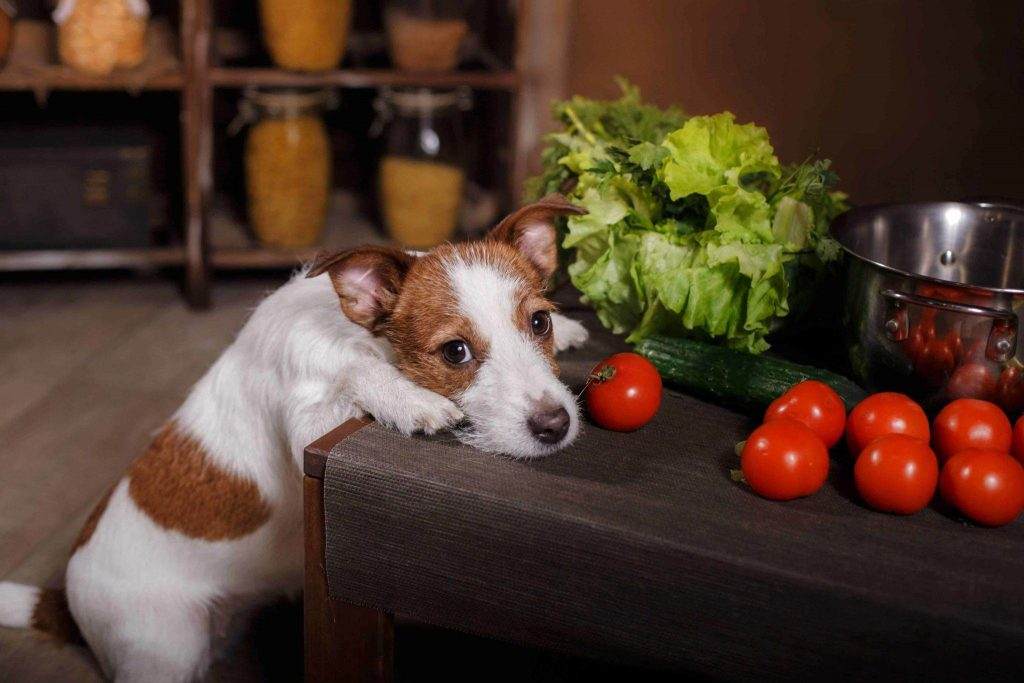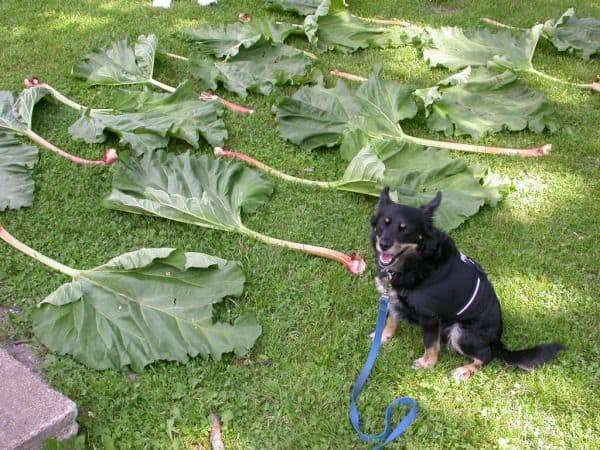We love it when our dogs are well fed and healthy. Many owners will feed their pets meats and avoid fruits and vegetables. It could be due to their lack of awareness of the benefits these foods may have on their pets. Also, it may be an effect of the assumption that these animals are strictly carnivorous and do not eat fruits or vegetables.
Fruits and vegetables are ideal for your best friend, but not every of these is good for their health. Some are a high risk to the safety of your animal.
As you look to add these to your dog’s diet, it is important that you pay attention to some common rules for feeding them vegetable and fruits. Note that adding fresh foods (including fruits and vegetables) to your dog’s diet requires an understanding of those that can harm them.
In many cases, some can cause stomach upset or worse, especially when consumed in large amounts. It is also known that feeding the wrong vegetables and fruits could cause diarrhea and sometimes more serious problems including death.
For example, nectarines and peaches are a big “NO” as part of the diet. These are notorious for causing severe blockages and pain in the dog’s digestive system. It is also scary to know that some pits may contain cyanide. Cyanide is very toxic for dogs and could lead to death.
How our friends digest their food significantly differs from the human digestive system. We can manage to digest most fruits and vegetables but it is not the same for our pets.
Feeding them the wrong fruit or vegetable can cause long-term problems to their digestive system. Many owners have complained about grapes and some reported grapes as a cause for the death of their animals.
There are plenty of vegetables and fruits that we could feed our dogs, but the focus of this article would be on those that ought to be avoided.
Fruits and Vegetables to avoid
1) Apples
Among many owners, apples are part of their dog’s favorite meals. I would agree that they are good for your pet but it does not mean the entire fruit is safe. When it comes to apple, do not allow your pet to eat the seeds as they contain toxins such as cyanide.
Be very careful as you feed them with apples. You need to cut the apples into pieces that your dog can eat without complication and remember to remove the seeds.
Also, similar to us, eating too many apples could be disastrous for your best friend. Too many apples can cause stomach upset and diarrhea, so please make sure you balance their apple intake. You can add them to recipes when cooking for your dog to avoid feeding them with too many apples.
2) Asparagus
You may assume that because a vegetable is safe for you it would be fit for your pet. It is not always the case when it comes to our best friends, especially with asparagus. They should not eat asparagus as it is not always safe for them. Moreover, it is not necessary to feed them to dogs as they cause unplanned complications.
You might have noticed that asparagus stalks are very strong. For example, we humans do not eat raw asparagus because of their thought nature. So if they are that difficult for us to eat raw it means they would also be a problem for our pets.
I would not recommend asparagus, but you should cut them into small pieces before giving them to your pet. They might not chew the asparagus enough before swallowing; hence, risk chocking in the process.
It is for such reasons that it is recommendable to cut asparagus into small pieces. Also, you can cook it to make it soft enough for swallowing.
There are plenty of vegetables that will go easy on your pet. There is no point of feeding them with asparagus when you can avoid it.
3) Avocado
Another disastrous fruit to give to your pet is the avocado. Avocado can be a healthy treat for you, but it should not be given to your best friend. Despite their attractive appearance that could assure safety and encourage health, avocados are not safe at all.
Its skin and leaves contain toxins that cause vomiting and diarrhea. The flesh of this fruit is not as harmful to your pet, as the other parts of the plant, but it could still be too much any dog. Anytime they eat avocado, watch out for symptoms like diarrhea, insufficient stool production, and vomiting.
The best thing would be to visit your nearest veterinary immediately your pet eats avocado. Whenever possible, try keeping avocados ways from your dog by all means.

4) Grapes and Raisins
If you have not heard about the bad reputation grapes and raisins have as dog meals then read on and take heed. These are known to be very toxic to dogs. However, researchers have not yet reveal verified which of these substances causes a bad reaction in dogs.
Since there is limited information on why grapes and raisins are bad for dogs, it is best to avoid peeled or seedless grapes. Same to raisins, you should not give them to your pet. The toxicity of grapes and raisins can even be fatal to your best friend.
According to the Animal Poison Center (ASPCA), fruit consumption can cause sudden renal failure in dogs. The center reports that grapes and raisins have a bad reputation as there were 3,722 reports, in 2016, of them causing complications among dogs.
Watch out for the following signs and symptoms of toxic ingestion when your dog accidentally eats grapes or raisins.
- Unusual stillness
- Losing appetite
- Lethargy
- Weakness
- Diarrhea and vomiting – a few hours after ingestion
- Dehydration (pale gums, dry mouth, and nose). Pull your pet’s skin (at the back of its neck) and if it does not spring back immediately then it is likely they are dehydrated.
- Abdominal pain
- Kidney failure – very fatal
- Diminished urine and increased thirst
5) Mushrooms
Mushrooms are a favourite meal for many human beings. We love them in pizza and mix them with other foods. Nonetheless, they are not recommended for dogs.
We can find mushrooms in our parks, gardens, or in bushes as we walk them. Many owners ask whether mushrooms are good for their pets and whether they are a high risk to these animals.
It has been argued that the answer to such a question is dependent on the type of mushroom. I think it is best to avoid mushrooms despite some owners recommending that we only avoid wild mushrooms.
What about wild mushrooms?
Some people think that dogs do not eat poisonous mushrooms because they can smell and recognize the toxins. Unfortunately, this cannot be true. Veterinarians claim that this assumption has been the leading cause of under-reported cases of poisoned pets.
Every time you suspect your best friend has consumed wild mushrooms rush them to the nearest centenary.
You cannot keep them from eating wild mushrooms. They are curious animals and will ingest mushrooms just like they would eat other strange things. They love to explore their environment through smells and tastes. In this case, the texture of mushrooms can be pleasing to these curious animals.
It is important to know some of the worst mushrooms species. These are Inocybe spp and Amanita phalloides. The Inocybe spp smell like fish and this could be the reason they are the most attractive to dogs.
Wild mushrooms (with their nicknames) that are dangerous for dogs
- Clitocybe dealbata
- Amanita gemmate – jeweled death cap
- Gyromitra spp – false morel
- Amanita phalloides – death cap
- Inocybe spp
- Amanita muscaria – deadly agaric
- Galerina marginata – deadly galerina
6) Onions
Onions are infamous for causing bad breath among human beings and animals. Among dogs, they can be more damaging than bad breath. Although this favorite vegetable can improve the taste of your food, it contains toxins that can cause serious complications.
The onions have a toxic principle known as N-propyl disulfide. Whenever they ingest onions, the compound breaks down their red blood cells and will cause anemia.
Moreover, the toxins cause oxidative damage to the red blood cells where molecular oxygen is attached to the animal’s red blood cells.
As this happens, it reduces red blood cells ability to carry oxygen and will also cause your dog’s body to assume that the blood cells are aggressors. The body will react through hemolysis where the erythrocytes get destroyed and the end result is hemolytic anemia.
For this reason, you should avoid every part of the onions when preparing meals for your best friend. Whether cooked, raw, powdered, or dried ginger and onions very unsafe.
7) Tomatoes
Most dogs want to eat whatever they find attractive or “tasty,” regardless of what it could be. It could be a juicy steak or raw tomato; they will swallow it without a second thought.
Sometimes we assume tomatoes are safe and feed them to our pets. If you do not understand the risks of feeding them tomatoes then you are in big trouble!
Tomatoes contain harmful ingredients that are a health risk among some animals. The tomato component, solanine, is a substance found in its leaves and stems and other related plants. The substance is what makes tomatoes harmful to your pet.
Fortunately, when they accidentally get to eat ripe tomatoes they can be safe. It is because solanine is concentrated on the green parts of the plant. These are the stems, young fruits, and the leaves. The ripe fruit has little components of this substance; hence, it is not of high risk to dogs when consumed.
We could then assume that ripe tomatoes are safe for our pets. If you have tomatoes in your garden, then you ought to take precautions to avoid your best friend eating raw fruit or any of the green parts of the plant.
If your best friend consumes the green section of a tomato plant, watch out for signs of poisoning. These include:
- Coordination loss,
- Gastrointestinal upset,
- Muscle weakness,
- Cardiac effects, and
- Seizures.
Fortunately, these symptoms are rare and the prognosis for dogs with such poisoning is good. If your pet has any of these symptoms, immediately call your veterinarian as they may indicate serious health problems other than the consumption of tomatine.
The final answer to the question of feeding them tomatoes would be yes and no. Ripe tomatoes are non-toxic; hence, safe for consumption. On the other hand, immature tomatoes and the green sections of tomato plants should be avoided.

8) Cherries
Cherries are of many types, all of which are very popular foods. They are delicious and a favorite to many of us. You may want them to enjoy these delicious fruits, as well, and the safe way to ensure this is by feeding them the pulp of the fruit. Nonetheless, the other parts of the plants are moderately toxic to our best friends.
These sections are so dangerous that they cause respiratory failure and death. It is because they contain cyanide, which is not surprising the reason for their toxicity. Keep them away from cherries. If you want to share it with your dog, simply be sure to provide only the pulp.
Technically, scientists claim the fleshy parts of cherries are safe. The rest of the plant contains toxic cyanide. As tempting as it could get, please avoid giving them cherries.
9) Currants
The currants fruits can come from bush berries and Zante grapes. These are claimed to be very acidic fruits. Also, currants are fruits that come from different types of grapes that are similar to sultanas and raisins. They can be white, red, or black and we use them to make syrups, liquor, and preserves.
Many food products have currants and other related fruits.
These foods are such bread and other baked goods, trail mix, and bagels. Dog owners assume that raisins, grapes, and currants are not dangerous for their pets because they are good for humans.
It is not true because these fruits or food containing a high rate of these fruits could be disastrous for your dog.
A dog will only be poisoned by currants when they ingest them, which means you should be careful with how you keep your food. The consequences of currant poisoning could be kidney failure.
10) Raw and green potatoes
Potatoes are healthy vegetables but do not keep some raw potatoes and potatoes where your dog can reach them because they contain toxins. Potatoes and other vegetables such as tomatoes produce solanine as a natural defense against insects.
Even in small amounts, your dog may have similar symptoms to food poisoning caused by chaconine and solanine.
Solanine is a cholinesterase inhibitor that blocks the breakdown of the neurotransmitter acetylcholine. This causes a loss of function of the nervous system and body organs by accumulating in tissues, including the liver. Solanine is also present in other major organs, such as the kidney, heart, brain, and lungs.
Green potato poisoning affects dogs when consumed in large amounts. In this case, the animal will have consumed plenty of solanine. The solanine is a glycoalkaloid that is naturally produced by raw or green potatoes, leaves or the skin. Solanine toxin causes breathing difficulties, gastrointestinal discomfort, and heart problems.
Raw potatoes and potato skin can also contain chaconine, a toxic substance that can cause kidney dysfunction, neurological symptom, and gastrointestinal irritation. If you think your dog has eaten potatoes, potato skins, or its green leaves, call the veterinarian.
11) Apricot
Like cherries, apricot seeds, stems, and leaves are toxic to dogs. They can the pulp without any adverse effects, but be careful if your dog has access to other parts of the plant. These plants also contain cyanide which can cause respiratory failure or even death.
Among human beings, apricot contains fiber; potassium and beta-carotene that can help us fight cancer.
As long as you avoid leaves, seeds, and their stems you can share ripe apricots and dried apricots, cut them into small pieces and add them to snacks and small amounts of dog food. Also, be aware that too much apricot can lead to excess fiber and can cause indigestion.
12) Rhubarb
This vegetable can be delicious among humans, but it should never be given to our best friends. Their leaves and stems, when consumed by dogs, can lead to kidney failure and other medical problems.
Therefore, whenever you are preparing a meal that contains rhubarb or you have rhubarb somewhere around your garden ensure that your dog does not consume it.
According to Pet Poison’s helpline, these plants can contain a soluble oxalate crystal. The crystal can reduce calcium in the body, which is never good news as dogs become vulnerable to breaking bones.
However, dogs need to consume a lot of this substance to get serious symptoms. Also, an overdose of rhubarb can lead to kidney failure.

13) Lemons
Like grapefruit and all citrus fruits feeding lemon to your dog is unacceptable. This is because of the high levels of acidity in lemons that can cause vomiting, severe upset stomach and other complications.
14) Plum
Plums are a favorite to most people. I like them too and would love to share them with my dog, unfortunately, like lemons they are bad for my best friend. They may look harmless and attractive but they are a big risk to dogs.
The plum is a danger to your pet because it contains cyanide, which is a toxin. We have already examined the consequences of cyanide so by whatever mean do not allow your pet to ingest this fruit.
Conclusion
Diarrhea and vomiting – keep an eye on your dog for any of these symptoms when they ingest a poisonous fruit. Excess fiber can cause your dog to vomit or diarrhea. Whenever your dog experiences any of these symptoms take the necessary action.
Fruit and vegetables should be kept to a minimum – as observed most of the fruits contain a lot of sugar or a small number of toxins, which when consumed in high amounts will become health risks. For this reason, keep fruit and vegetables to a minimum to avoid causing your dog to develop complications.
Behavioral changes – every time you give your pet fruits or vegetables, keep an eye on their behavior, a few minutes or hours after they finish the meal. In the case there are changes in behavior, visit the nearest vet and stop giving them any vegetables or fruits until it is safe.
Not every fruit is a danger to your dog, but it is important to understand the type of fruit and what it contains before feeding it to your best friend. Sometimes dogs may smell toxins from fruits or vegetables and avoid them. It is not always the case, especially, when they see us feeding on these fruits they may be excited to join.
Always be sure to avoid giving your pet any of the above fruits or vegetables to keep them healthy and safe. Whenever you are uncertain about giving a particular fruit or vegetable to these beautiful animals, contact your veterinary or do some research.
References
- https://www.jstage.jst.go.jp/article/jvms/64/11/64_11_1069/_article/-char/ja/
- https://www.sciencedirect.com/science/article/pii/S0963996911000974
Table of Contents

